Recently, Costume, Fashion and Textiles students from Edinburgh College of Art have been visiting the Collections Centre to study our insect collections.
This has been a collaboration between Edinburgh Art College, Scott Neil in Learning and Programmes, Richard Lyszkowski, the Assistant Curator of Entomology, and myself in Collections Management.
Twenty-seven budding Alexander McQueens have spent time swarming over the Entomology collections, with a further 19 still due to visit. The array of colours, shapes and patterns in the insect world are perfect for inspiring designs, especially when combined with Richard’s fascinating facts and anecdotes about insect behaviour.
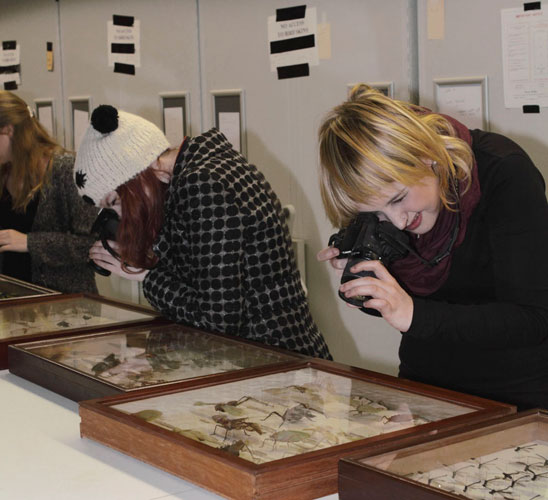
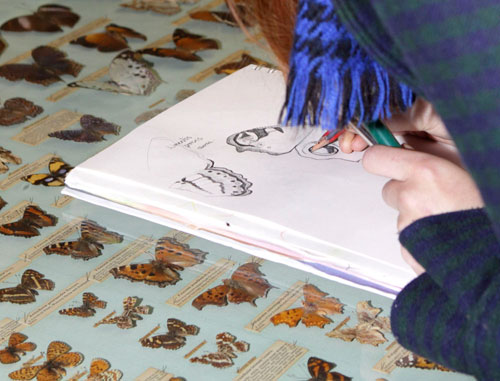
We have around two million specimens, from beautiful delicate butterflies to spider-hunting wasps. We’ve recently invested in improved storage for the collection with financial help from the Pelham Clinton fund, and it’s been great to use the new facilities to enable people to see one of the most spectacular collections in the museum.
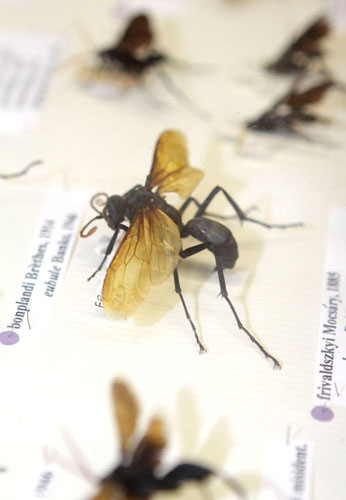
I’ve helped to facilitate the sessions and have really enjoyed looking at the collection in greater detail. Richard has been brilliant at explaining the differences between species and the survival methods they use.
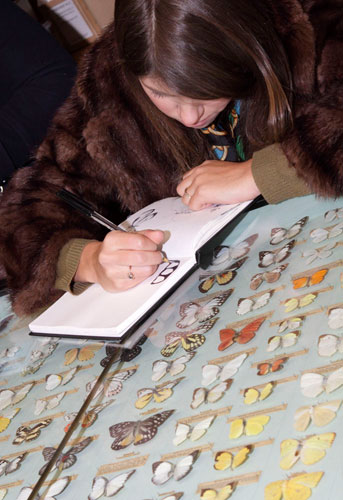
I’ve found myself fascinated by beetle wings. They operate on a hydraulic system, where the beetle pumps fluid into the veins of the wing to expand them ready for flight, then drains and intricately folds them up, to tuck into the protective wing casings. All this takes place in an instant, so this power of transformation could be applied to anything from carnival costumes to hi-tech tents and soft-top cars.
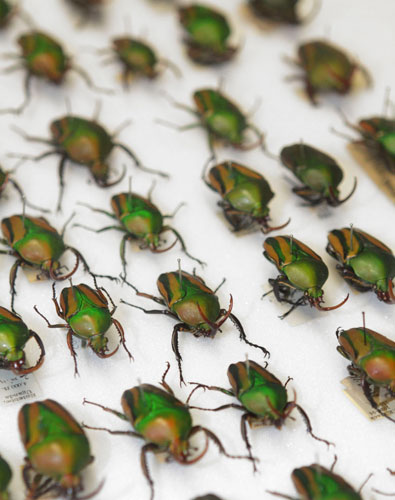
My other favourite insect innovation involves lycaenid butterflies – they include our hairstreak butterflies. The floaty tail pieces on their wings means that when they land on plants and fold their wings back, their rear-end mimics the shape of the antenna on their head, tricking any predators into attacking the wrong end.
I’m really looking forward to seeing the creations that the art students develop as a result of their visit. But I do wonder if the human imagination will prove as creative as natural selection…
